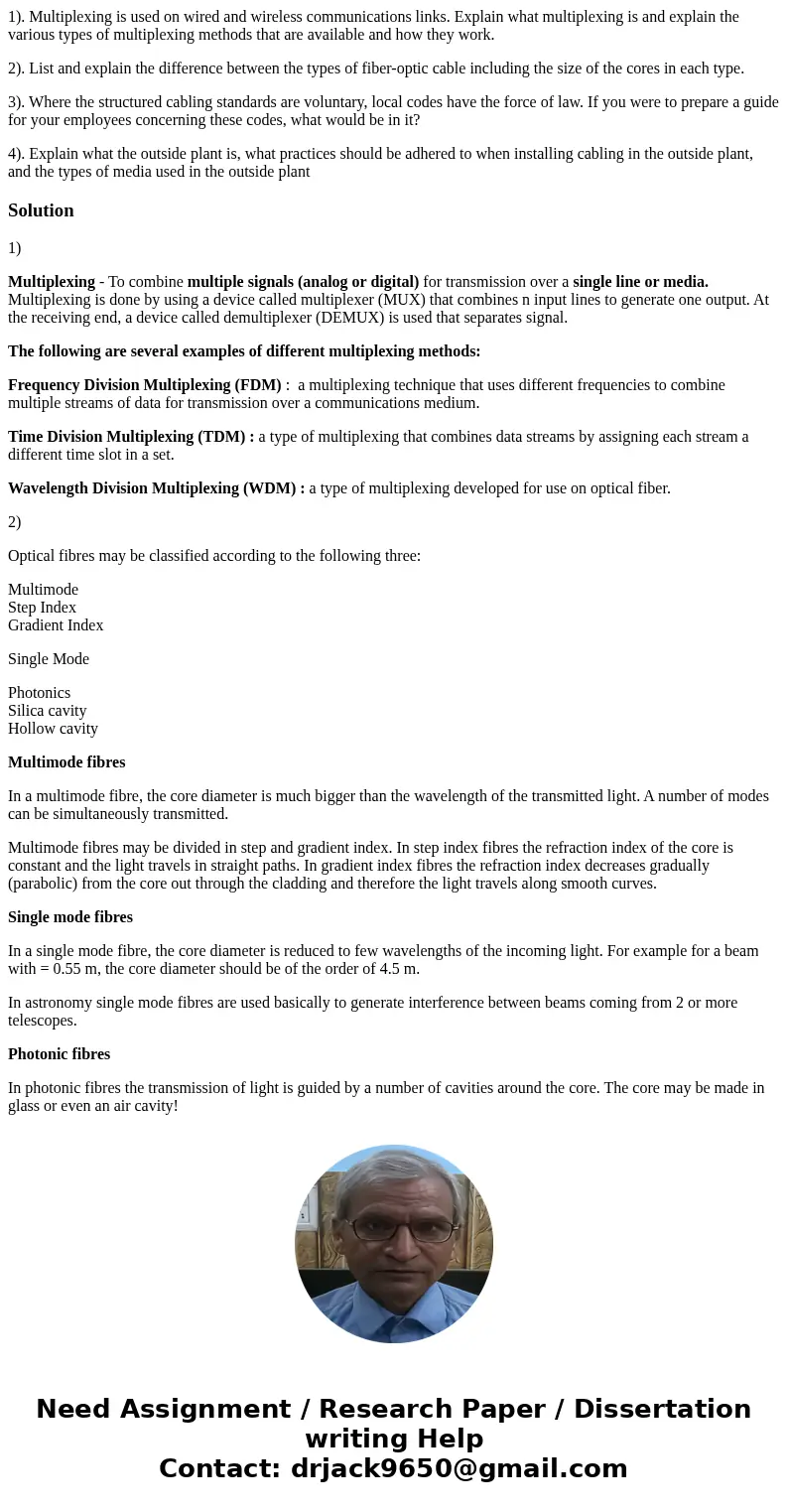1 Multiplexing is used on wired and wireless communications
1). Multiplexing is used on wired and wireless communications links. Explain what multiplexing is and explain the various types of multiplexing methods that are available and how they work.
2). List and explain the difference between the types of fiber-optic cable including the size of the cores in each type.
3). Where the structured cabling standards are voluntary, local codes have the force of law. If you were to prepare a guide for your employees concerning these codes, what would be in it?
4). Explain what the outside plant is, what practices should be adhered to when installing cabling in the outside plant, and the types of media used in the outside plant
Solution
1)
Multiplexing - To combine multiple signals (analog or digital) for transmission over a single line or media. Multiplexing is done by using a device called multiplexer (MUX) that combines n input lines to generate one output. At the receiving end, a device called demultiplexer (DEMUX) is used that separates signal.
The following are several examples of different multiplexing methods:
Frequency Division Multiplexing (FDM) : a multiplexing technique that uses different frequencies to combine multiple streams of data for transmission over a communications medium.
Time Division Multiplexing (TDM) : a type of multiplexing that combines data streams by assigning each stream a different time slot in a set.
Wavelength Division Multiplexing (WDM) : a type of multiplexing developed for use on optical fiber.
2)
Optical fibres may be classified according to the following three:
Multimode
Step Index
Gradient Index
Single Mode
Photonics
Silica cavity
Hollow cavity
Multimode fibres
In a multimode fibre, the core diameter is much bigger than the wavelength of the transmitted light. A number of modes can be simultaneously transmitted.
Multimode fibres may be divided in step and gradient index. In step index fibres the refraction index of the core is constant and the light travels in straight paths. In gradient index fibres the refraction index decreases gradually (parabolic) from the core out through the cladding and therefore the light travels along smooth curves.
Single mode fibres
In a single mode fibre, the core diameter is reduced to few wavelengths of the incoming light. For example for a beam with = 0.55 m, the core diameter should be of the order of 4.5 m.
In astronomy single mode fibres are used basically to generate interference between beams coming from 2 or more telescopes.
Photonic fibres
In photonic fibres the transmission of light is guided by a number of cavities around the core. The core may be made in glass or even an air cavity!

 Homework Sourse
Homework Sourse